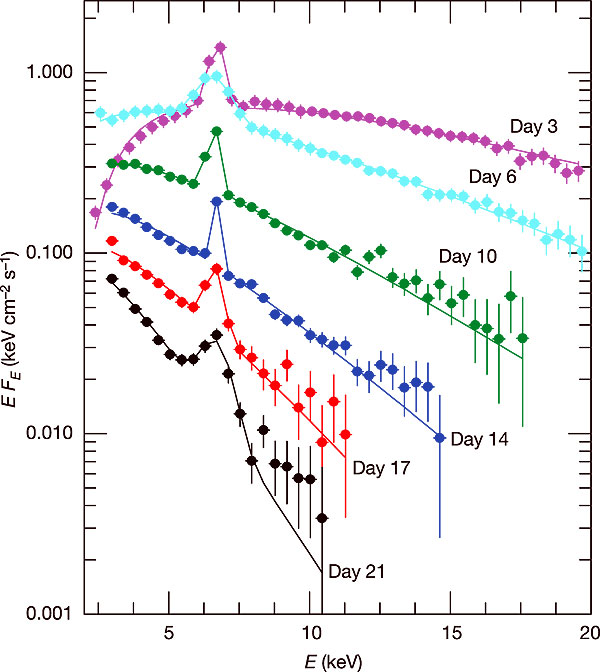
 Credit:J. L. Sokoloski et al., Nature, Volume 442, pg. 276
Credit:J. L. Sokoloski et al., Nature, Volume 442, pg. 276
The Blast Fades
Novae are binary star systems in which a red giant star dumps mass onto a compact white dwarf. Sometimes enough material accumulates on the white dwarf that a thermonuclear explosion occurs on the white dwarf's surface. This explosion is seen as a startling increase in the star's brightness, and during the explosion stellar material is blasted into space. Astronomers believe they understand how the explosion occurs, but they are less clear on the amount of material blown off, and how that material interacts with the galactic material near the star. Now important new observations of a recurrent nova called RS Oph by the Rossi X-ray Timing Explorer are giving astronomers an unprecedented view of how the blast wave from a nova evolves. The image above shows X-ray spectra of RS Oph measured by the Proportional Counter Array on RXTE obtained after RS Oph's last nova eruption in February 2006. The fading of the spectra with time after the eruption has helped astronomers measure the mass of the ejecta and also helps astronomers understand the geometry of the explosion.
<
HEA Dictionary ● Archive
● Search HEAPOW
● Other Languages
● HEAPOW on Facebook
● Download all Images
● Education ● HEAD
>
Each week the HEASARC
brings you new, exciting and beautiful images from X-ray and Gamma ray
astronomy. Check back each week and be sure to check out the HEAPOW archive!
Page Author: Dr. Michael F. Corcoran
Last modified Monday, 26-Feb-2024 17:23:33 EST


